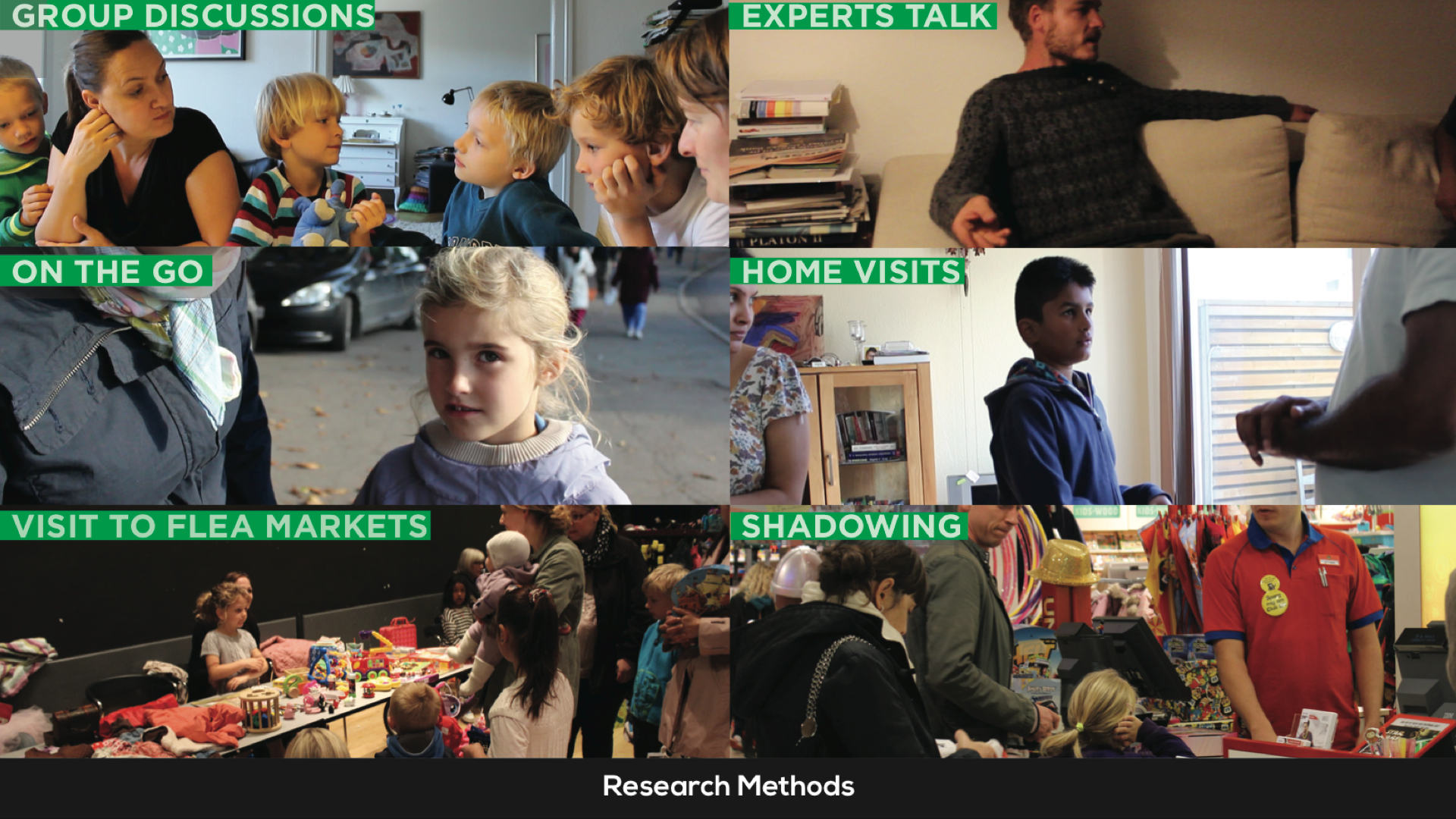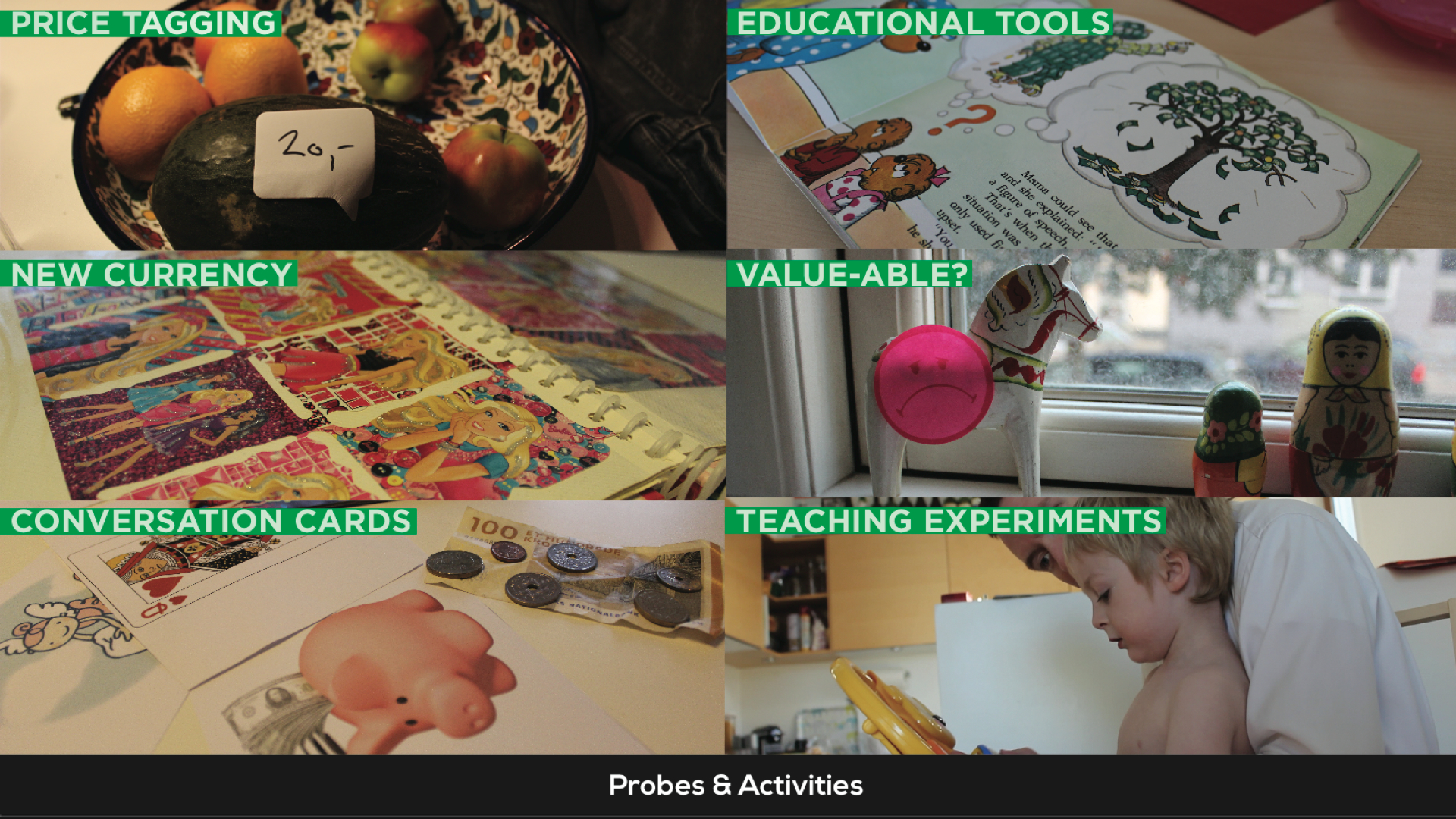Core 77 Design Awards 2014, Professional Notable I Honours at CIID IDP 2013
OVERVIEW: Little Treasures is a platform to empower teachers to build and integrate activities within the existing educational curriculum so that children can understand the value of money in a social and playful way.
THE INTENT
Little Treasures aims to explore fundamental questions about how early childhood experiences can help shape the concepts of money & value. How do children perceive money and what symbolizes value for them? Currently money as a topic is not taught formally but is more of a behavior practice that is inculcated at a young age. The idea was to harness this quality as much as possible and see where it can be taken at a social or community level. Though the idea was to make children aware about money the extent to which they should be informed was sensitive and soon money turned to larger concepts of wealth and well being.
THE OBJECTIVE
Little Treasures explores the unique perspective young children have towards the value of money and aims to build their capacity as forerunners of a more prosperous and secure future. It provides a framework to empower teachers to build & integrate a variety of activities that can be incorporated within the existing educational curriculum to make children more aware about the intangible concepts of money & wealth, in a social & playful way. These hands on tools can be used and customized by teachers to best suit their subject, the age group of the children and the context of use.
Research methods used were anchored deeply in individual and group discussions with children (5-10 year olds) and their parents, home visits to see how delicate topics like money were touched upon, visit to flea markets by and for children, shadowing in the market/ retail spaces and some discussions with economists and subject matter experts. Considering the sensitivity of the topic and the age group dealt with, a variety of research tools and probes were used like price tagging exercise at homes, valuable and not so valuable stickers, conversation cards, teaching experiments, storytelling and role play etc.
RESEARCH
Little Treasures is a body of work that evolved out of a very intense hands-on learning by doing prototyping method which informed key design decisions throughout the process.
In a nutshell, the first phase of the project was inspired by the unique perspective children have towards money and what can we as adults learn from them while the second phase revolved around on how we as adults can help foster this thinking to build their capacity as forerunners of a more prosperous and secure future.
classroom hours to make the learning more holistic and subject integration within the existing curriculum to best fit the learning process. A large variety of hands on tools and learning by doing toolkits were created for these experience prototypes such as booklets, forms, exercise leaflets, posters, cheque books, gift tags, auction tags etc that acted as props for different stages within the experience journey. These hands on materials made the learning process more engaging and effective and the teachers and students both looked forward to see what was in store next!
EXPERIENCE PROTOTYPING
Based on this understanding, I set out to shape the concept through experience prototyping. A set of 9 intense experience prototyping sessions at Bjørn’s International school with students in standard 1 (6-7 year olds) and standard 3 (8-9 year olds) along with their class teacher and subject teachers provided the backbone of the project. This helped define which age group of the children were best suited for what activities, involvement and role of the teacher, teamwork and social dynamics within the classroom, scalability and context of the exercises and how they could be extended outside
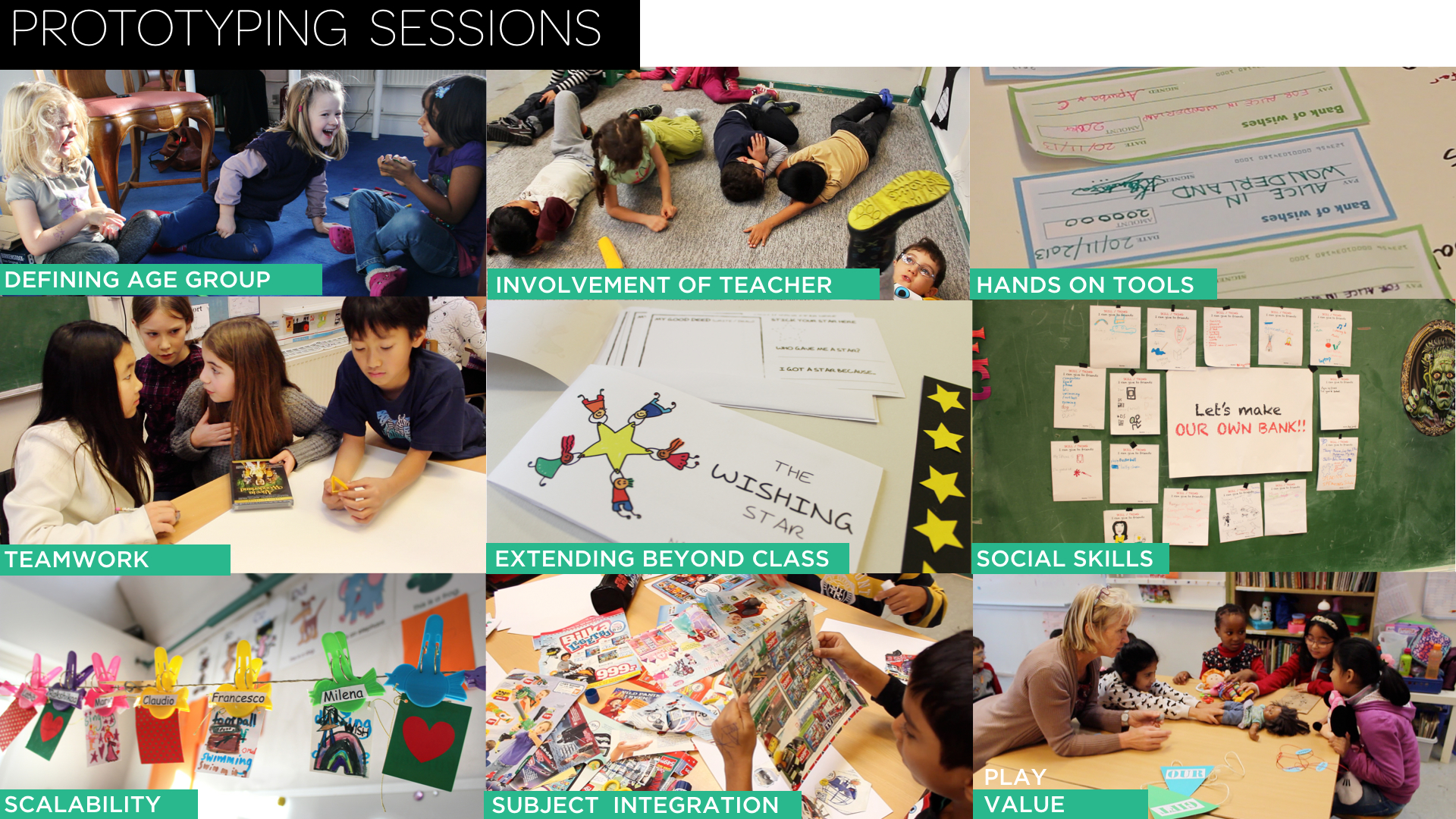
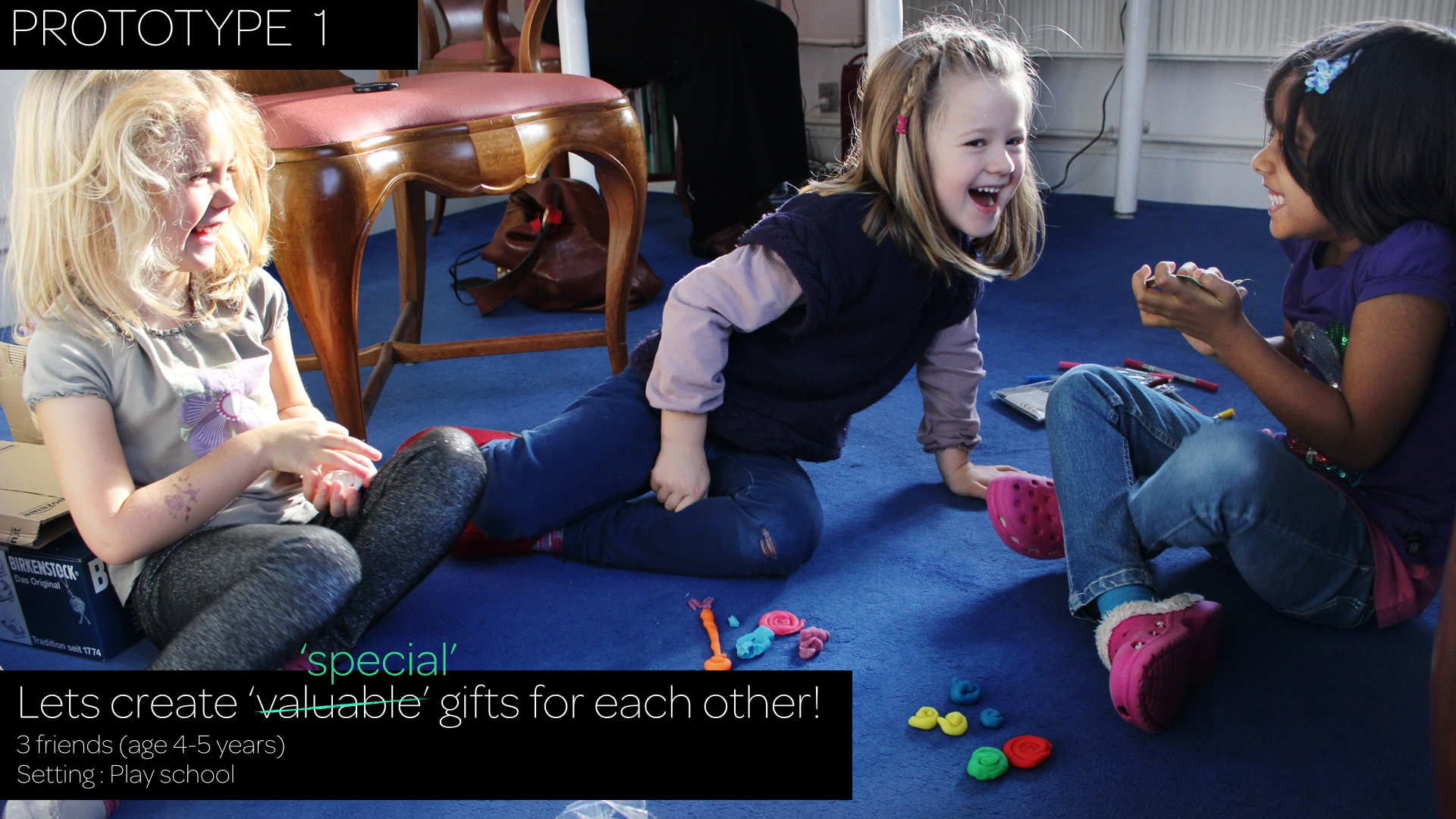
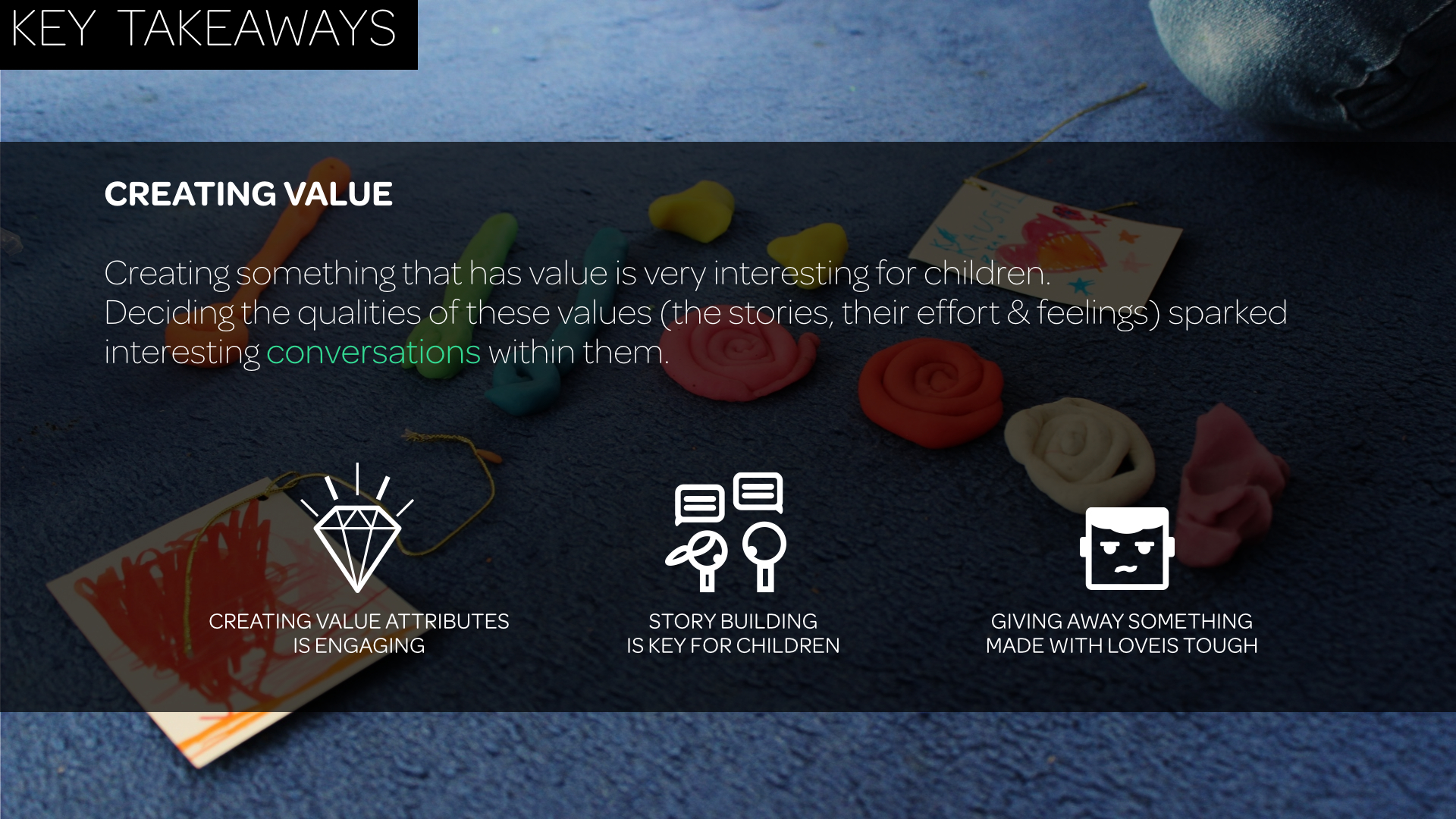
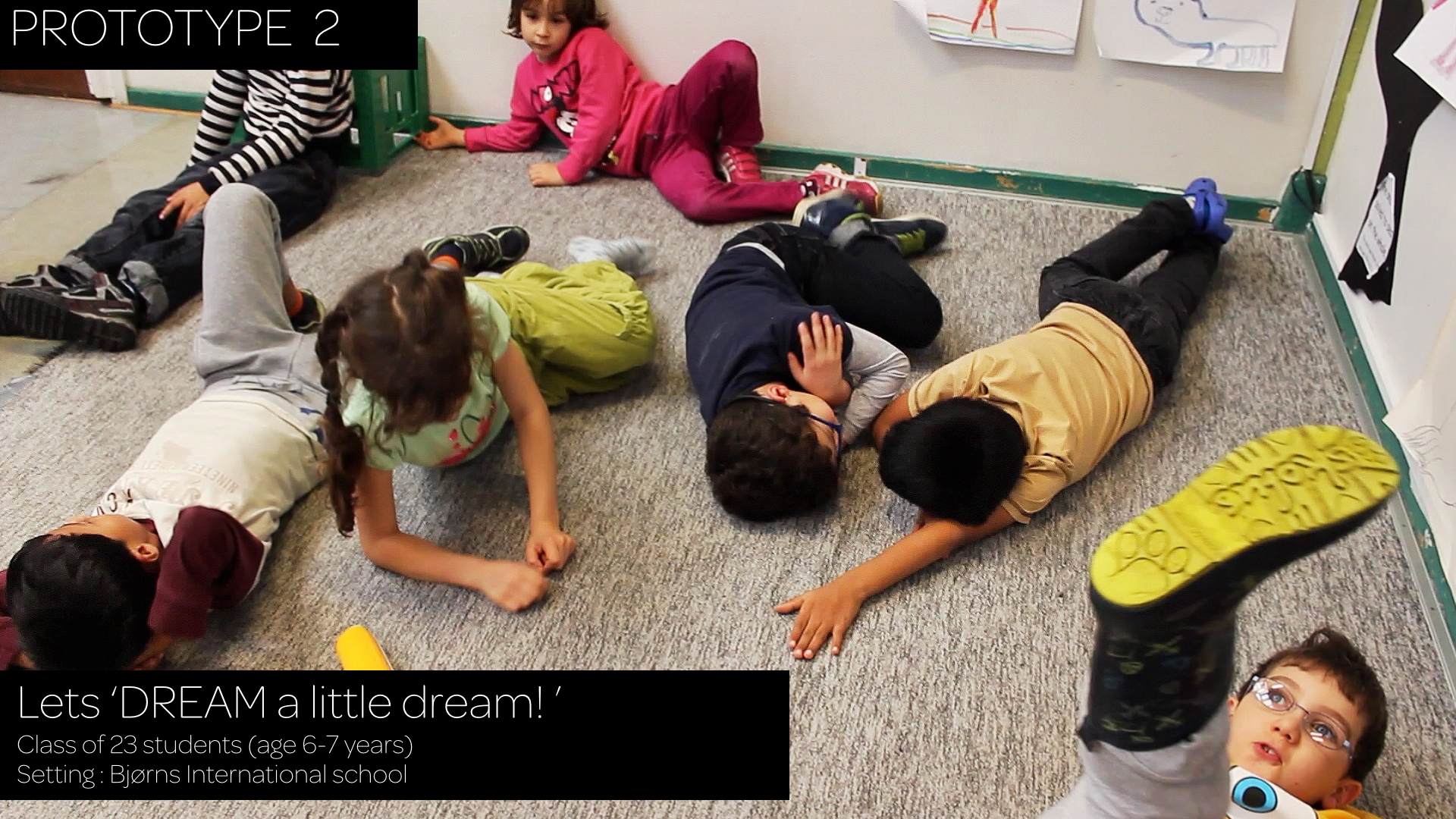
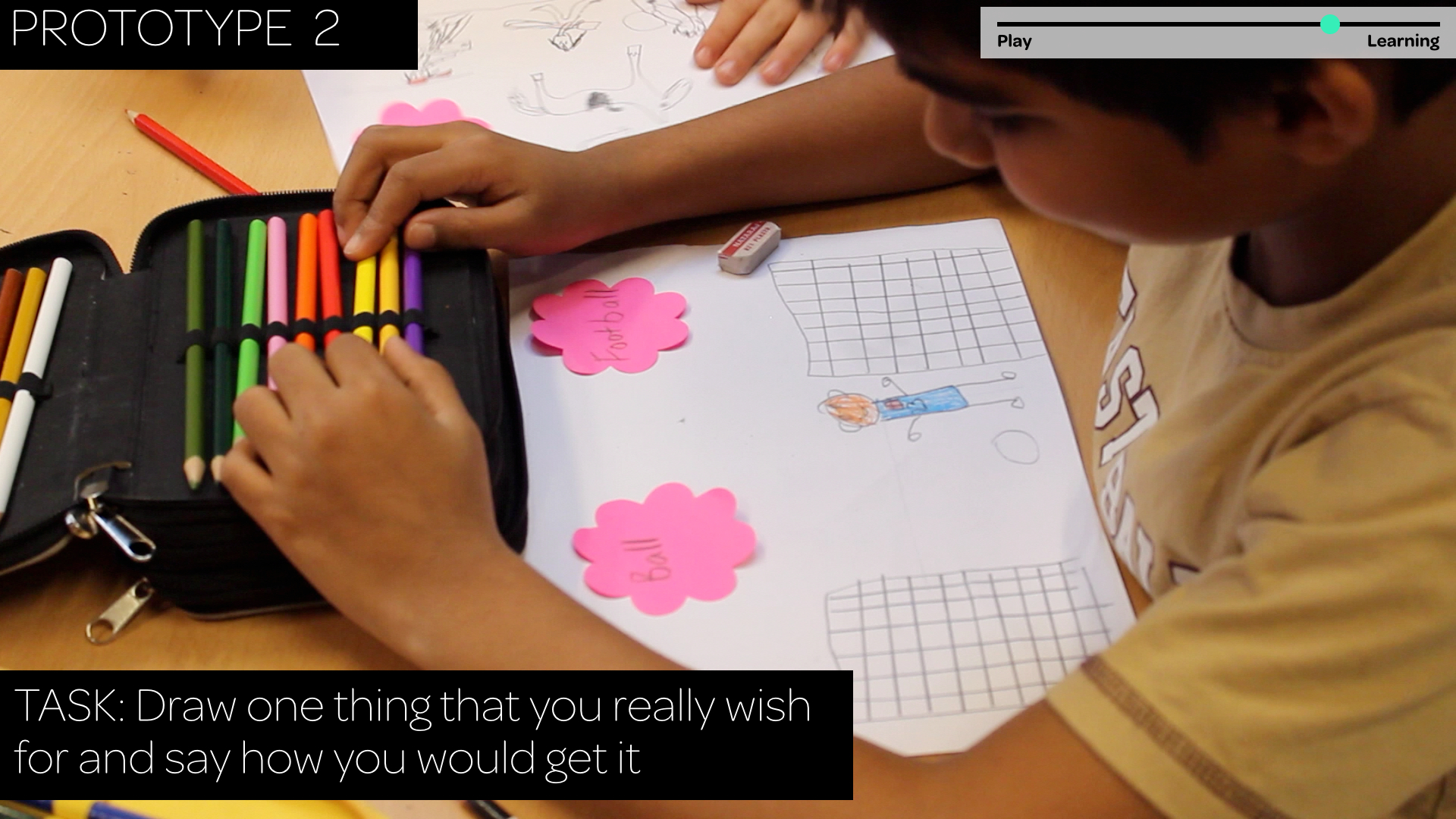
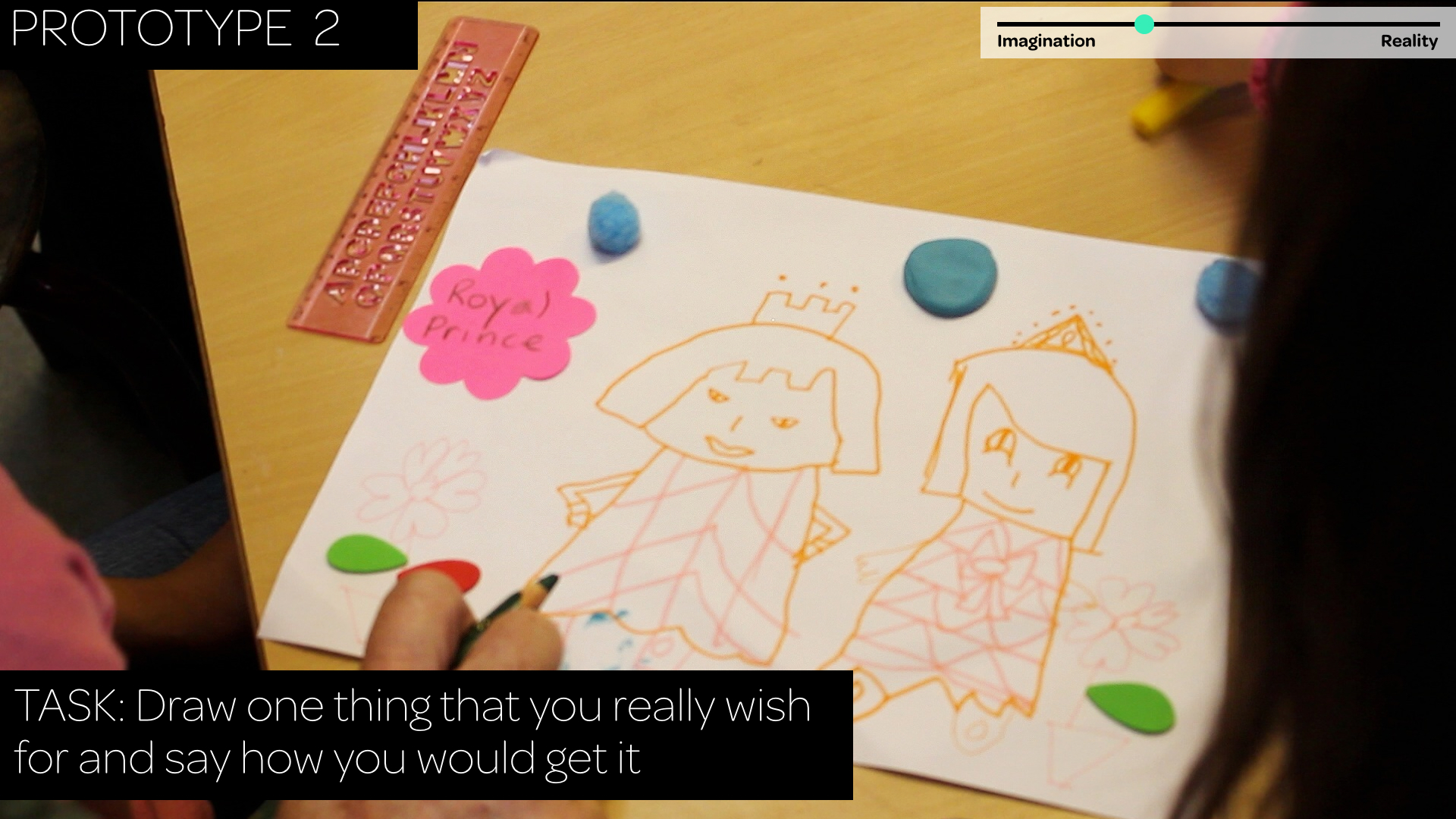
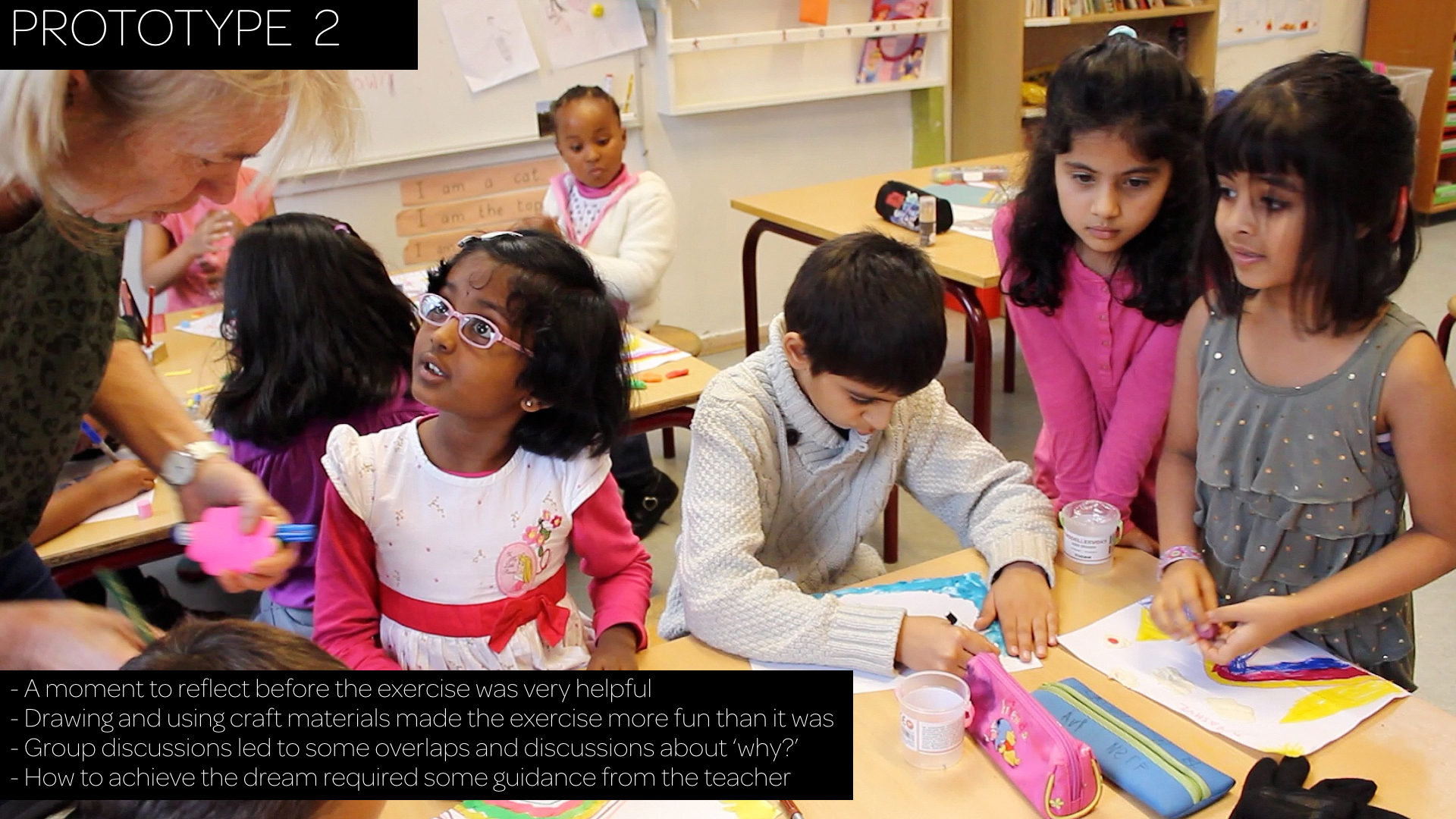
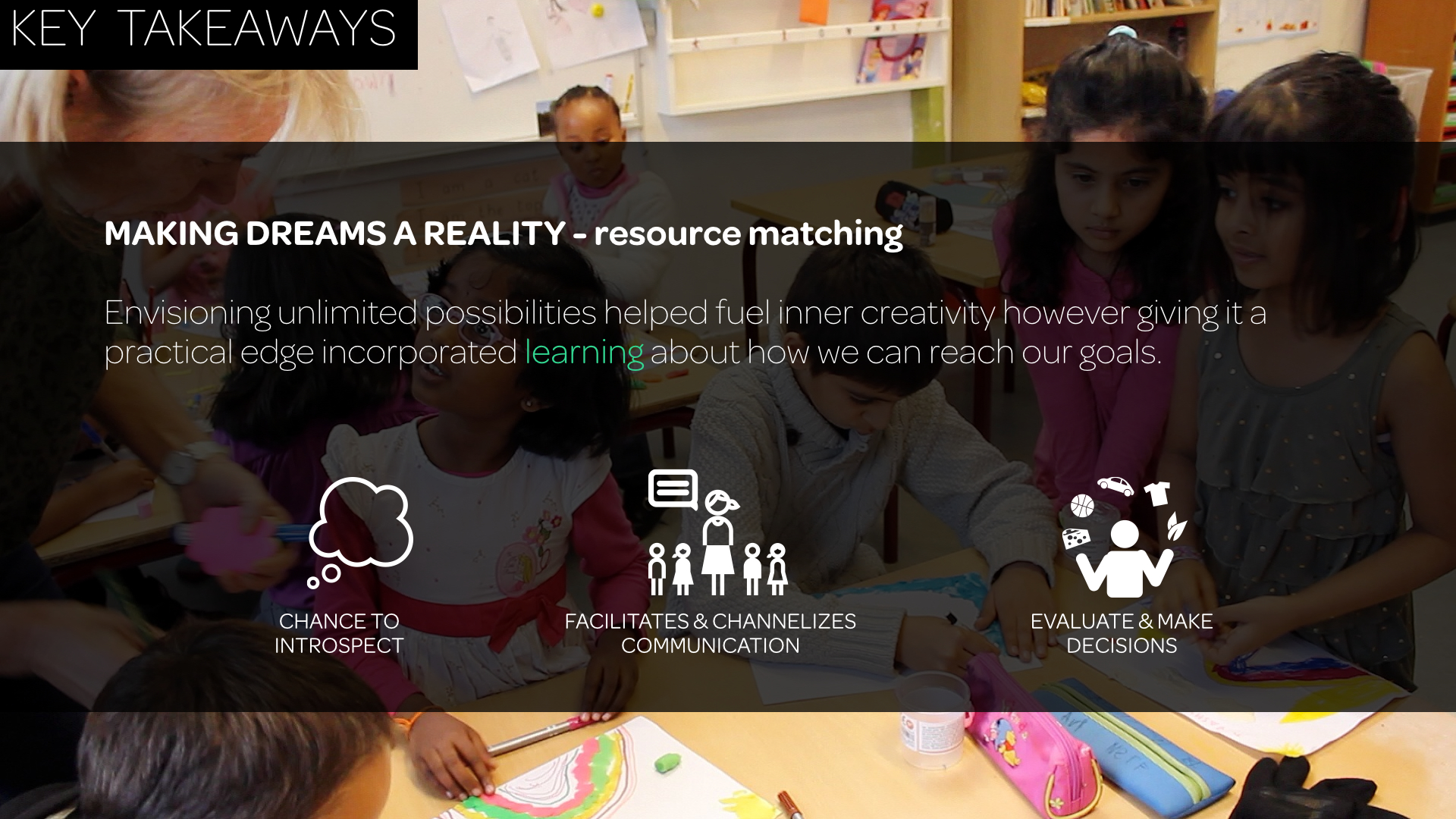
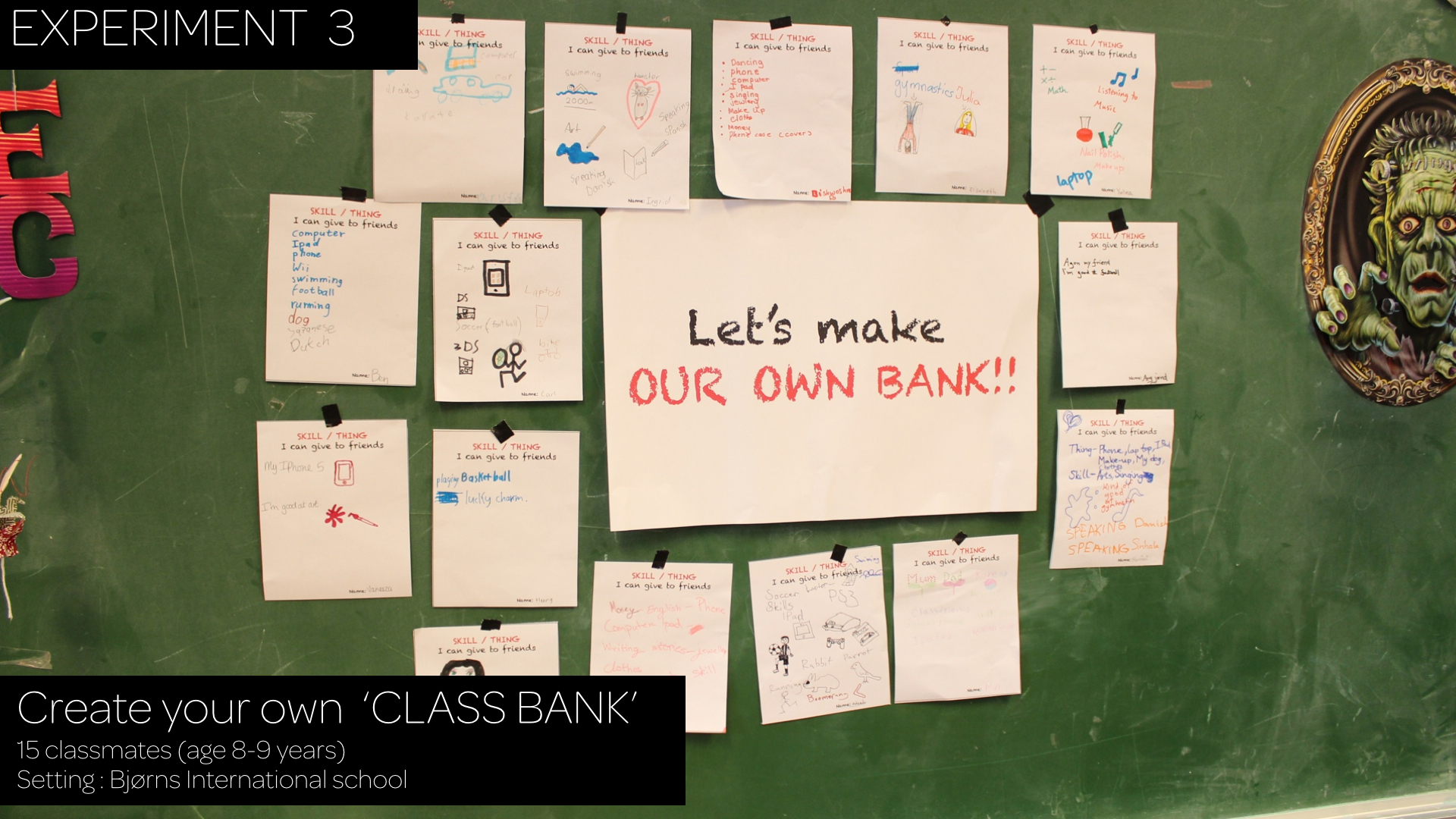
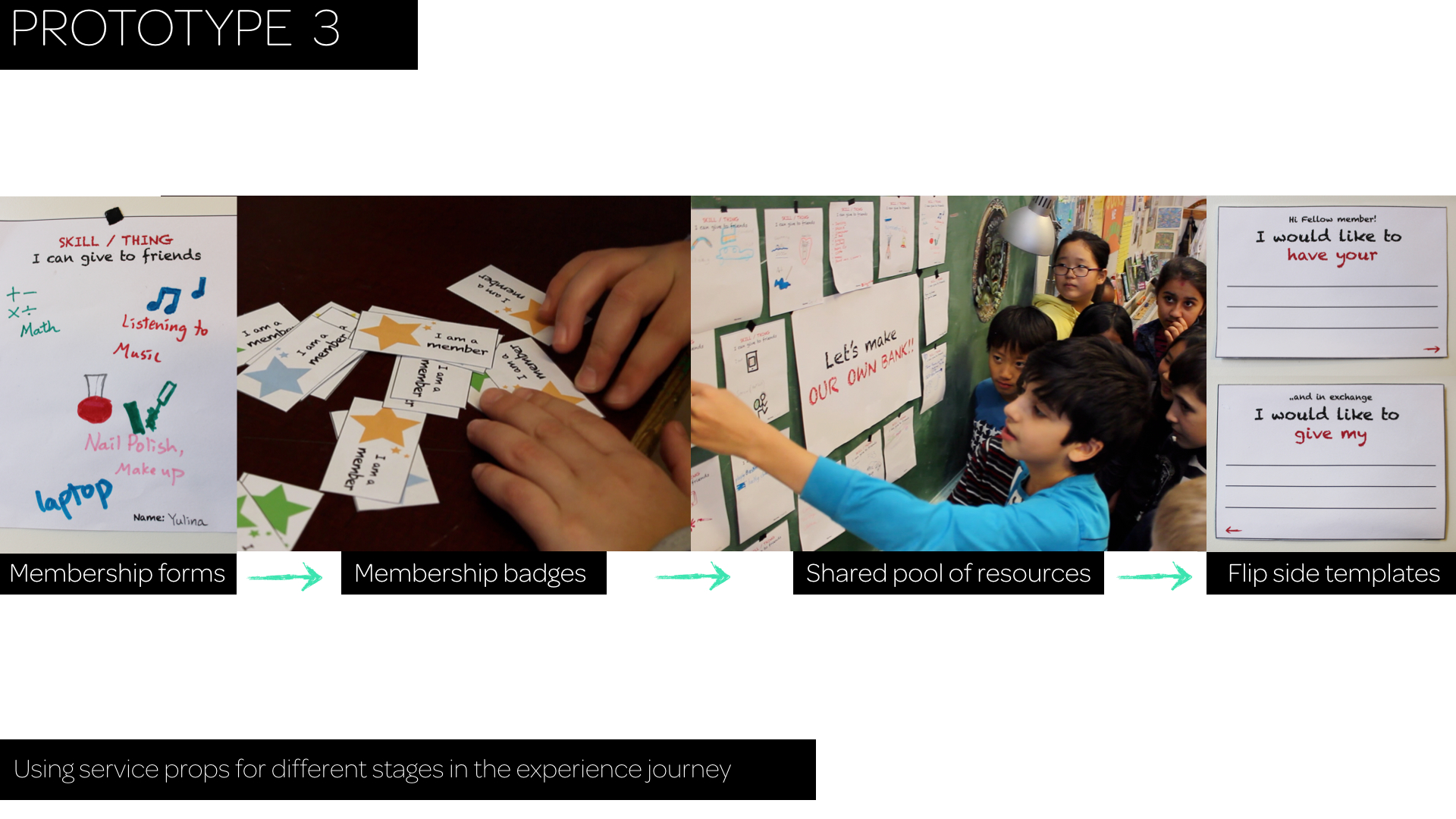

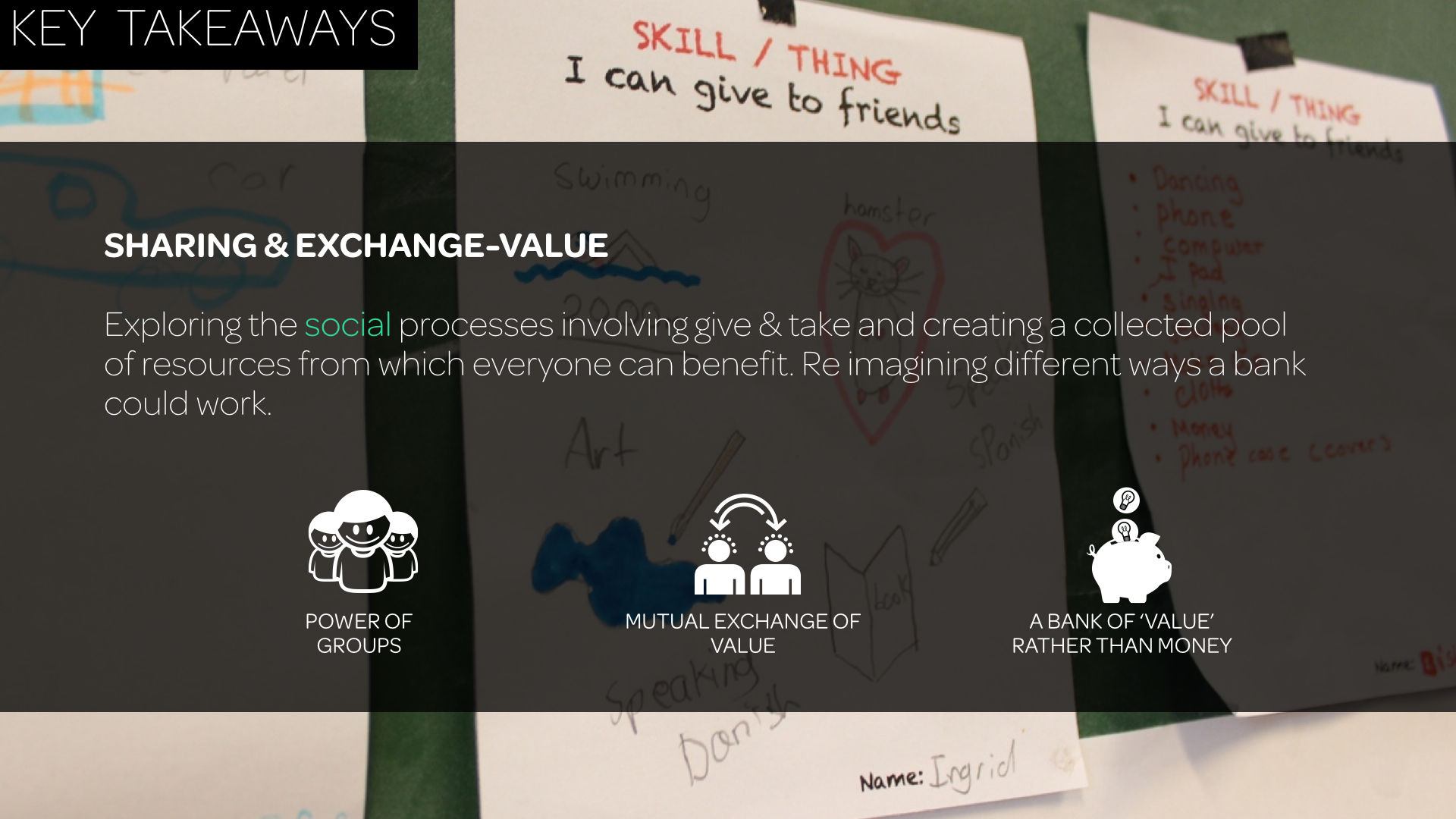
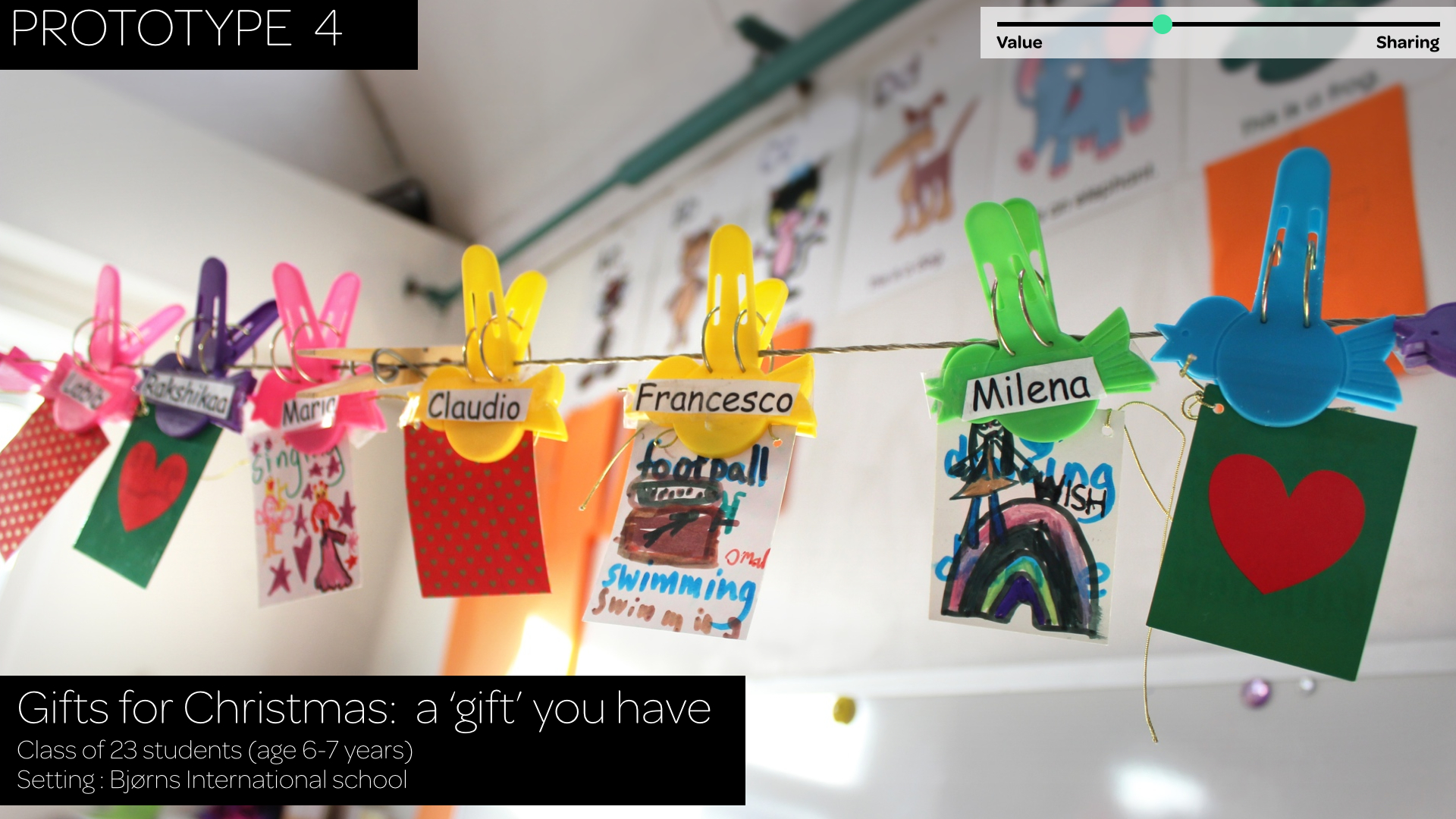
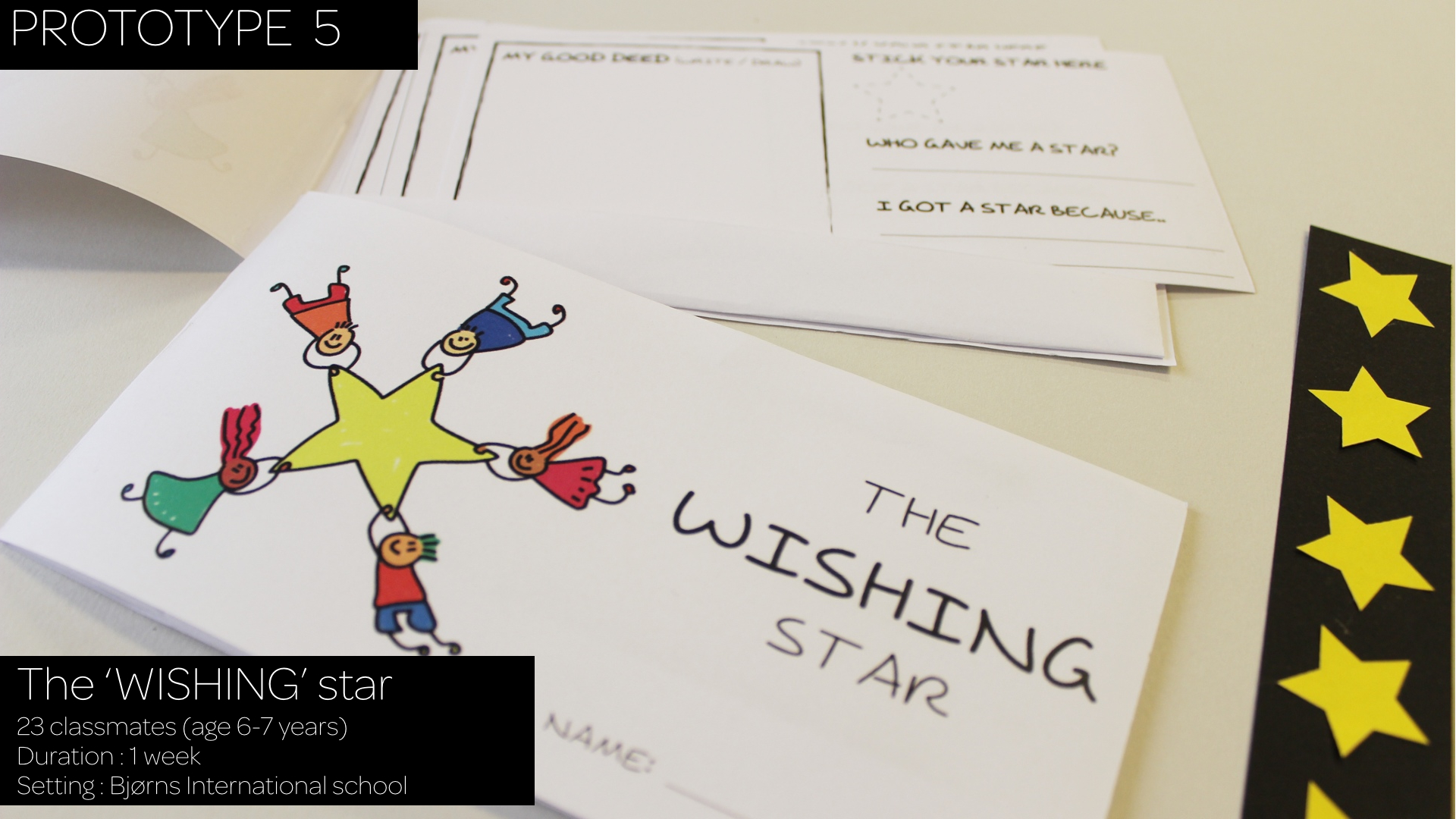
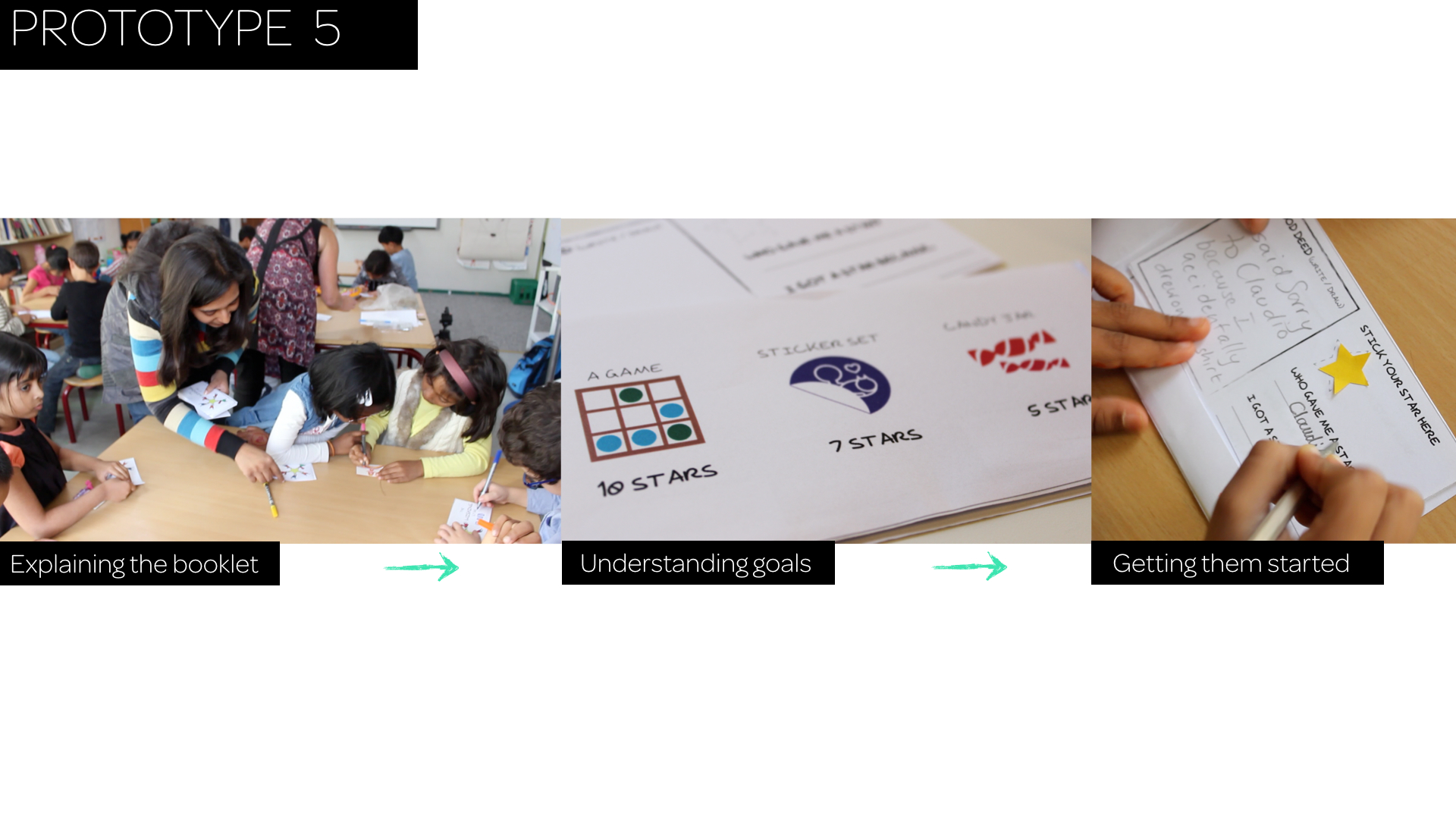
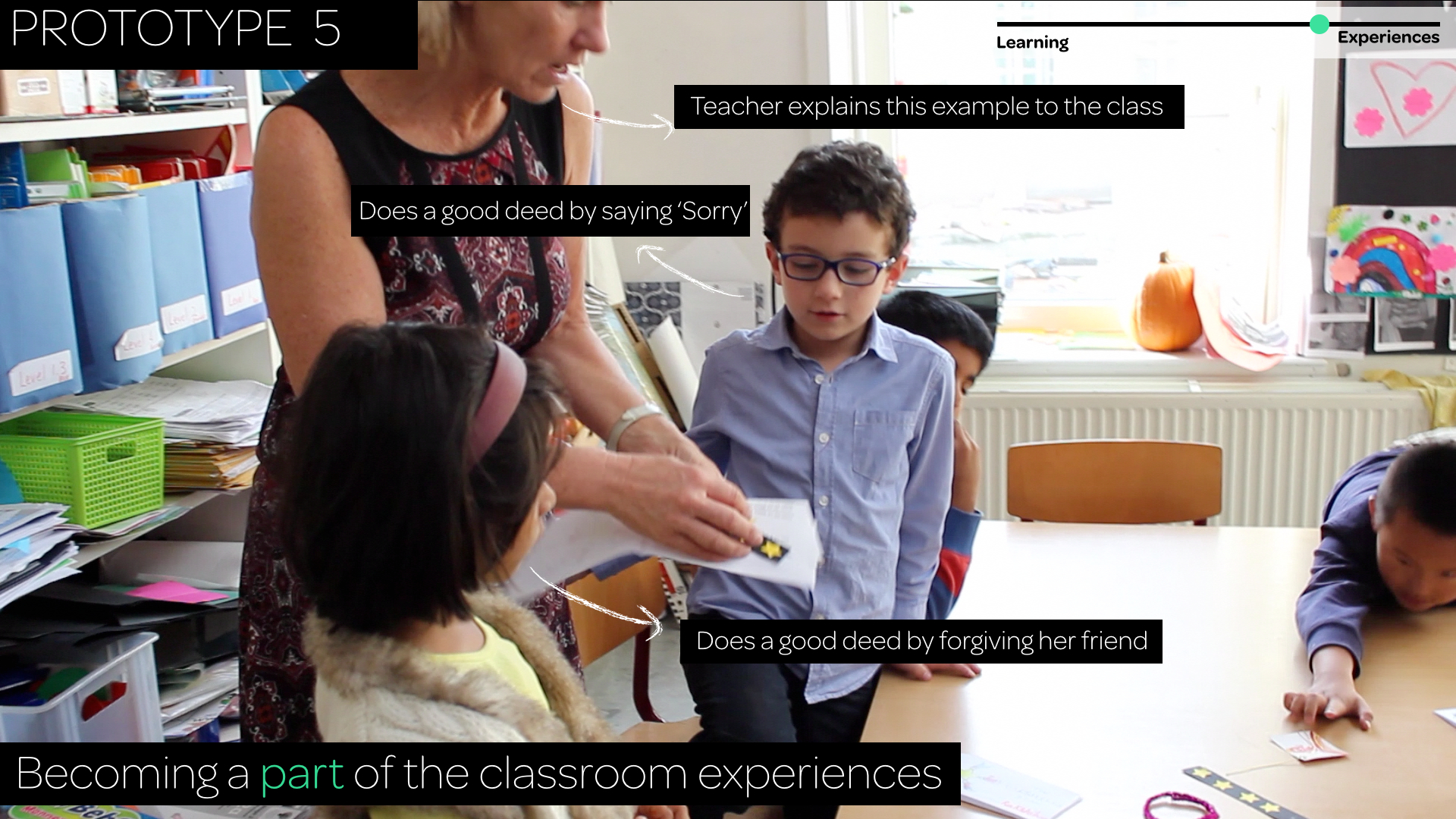
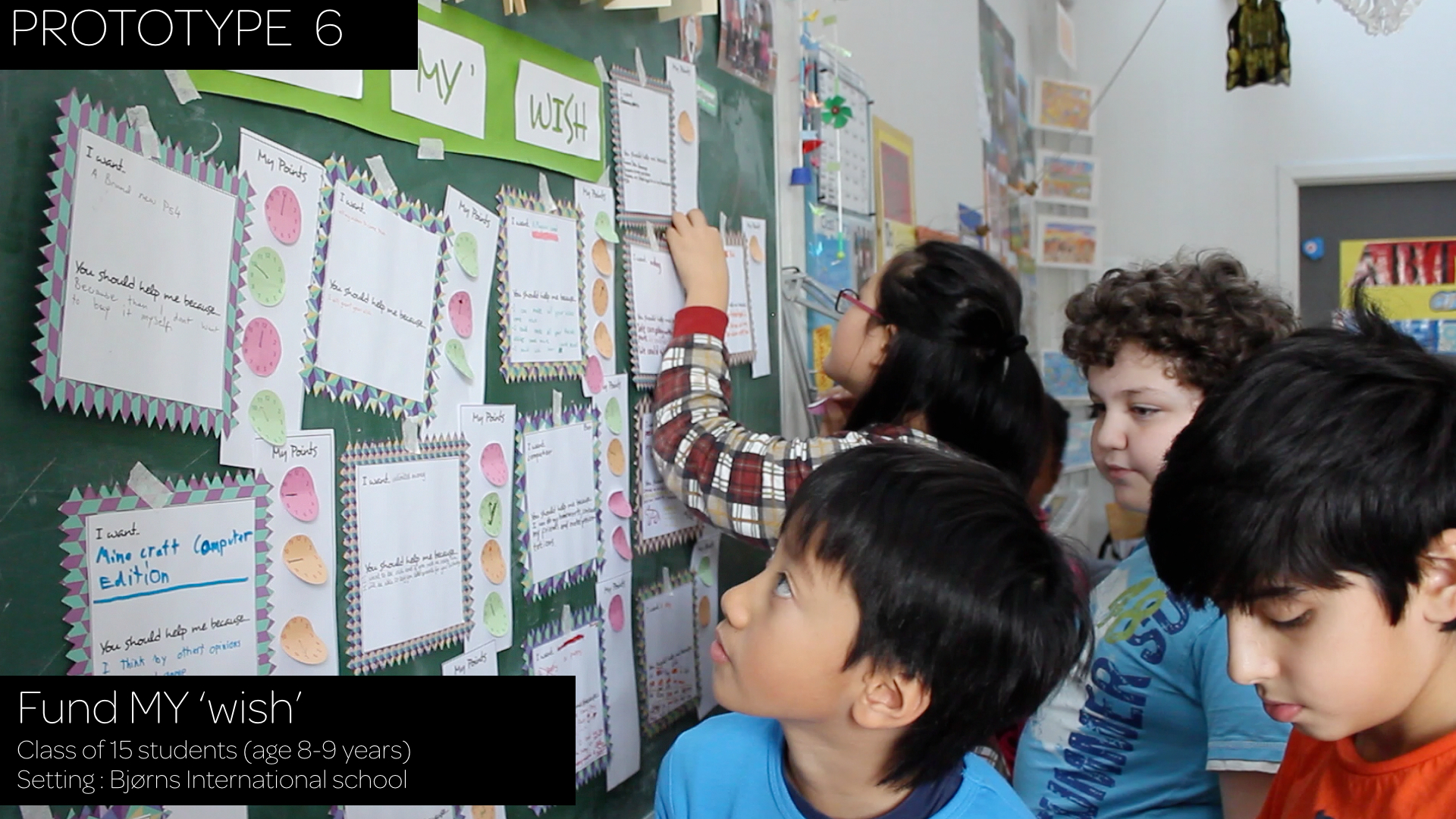
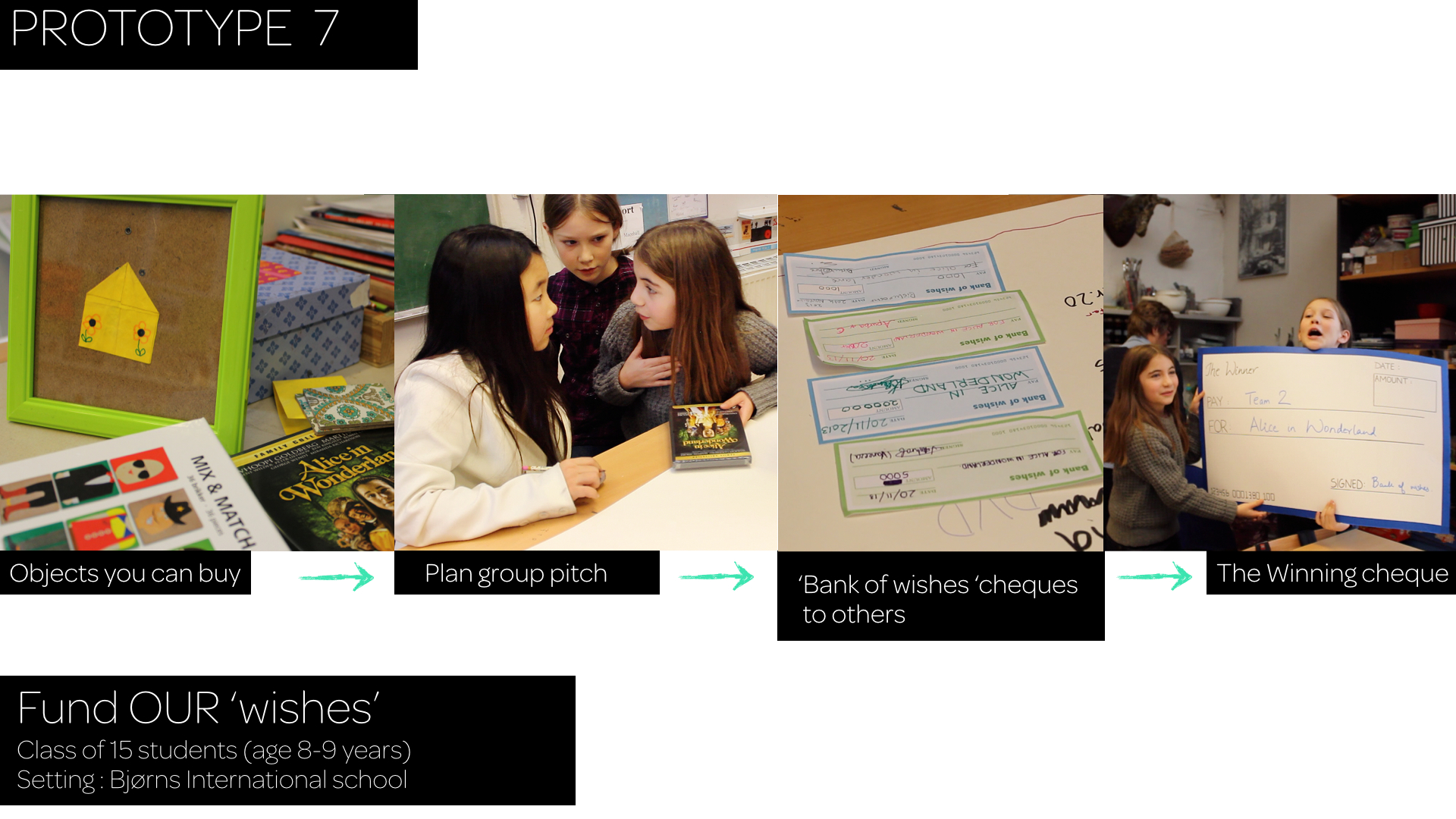
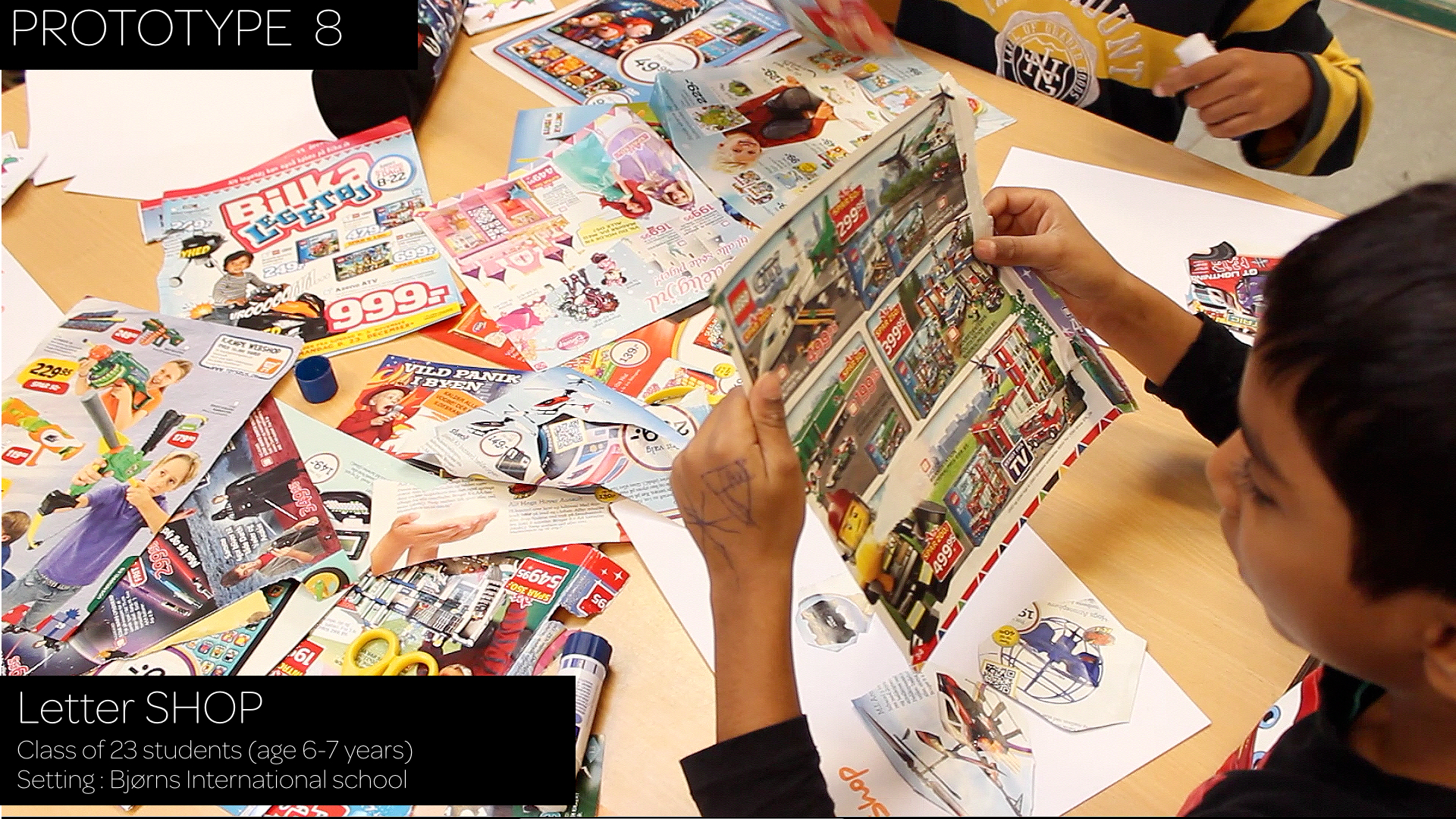
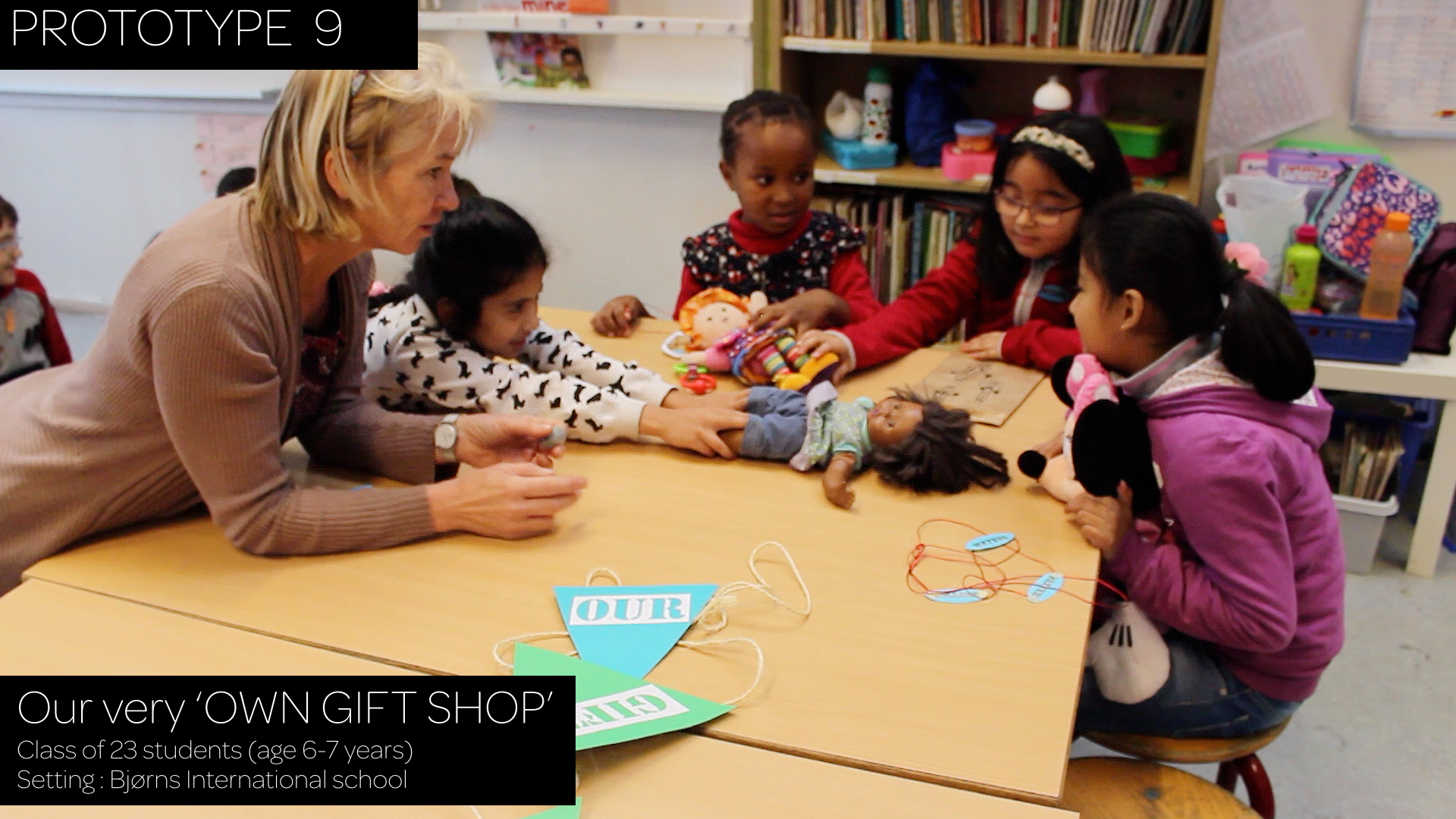
There was a constant iterative loop between all stakeholders and each experiment led to the next by gaining deeper understanding of what was the way forward. The activity cards and digital layer around the project were developed as a result of a co-design process with the educators. Understanding the levels of engagement of the educational institutes was important in defining the support needed for the service to operate. Throughout the project the iterations developed aimed to be flexible, universal and adaptable so that they can be used in a variety of situations and educational environments. The terminology used, priority of information and the level of fidelity of the activity cards was also optimized by the level of flexibility and structure desired by the teachers.
CO-CREATION
Little Treasures was a result of a long iterative design process where multiple experience prototypes for teaching and learning were explored. It was shaped by students and teachers as the process evolved and was therefore very fluid in nature. This project aimed to enhance the current educational setup by the inclusion of design thinking. The challenge was not about redesigning the learning methodologies but supporting a learning-by-doing, trans-disciplinary approach that offers creative exchange among students, peers and teachers in a structured yet experimental learning environment. Since the project is anchored deeply in co-creation, a wide range of experience prototypes were developed within its span, laying emphasis on participant feedback.
shows that learning is going on and at the same time the students are having fun. This excitement that lingered on even after the activity made the learning more effective and extended. Looking at how students are talking, participating and building upon each other to learn & grasp more were good clues for the teachers to know where the child was in their development phase. The other strong potential was that it creates an opportunity to stir interesting conversations for teachers and discuss newer ways of approaching teaching methods. The teachers felt it not just provides a framework of tools that they can use but an opportunity to enable behaviour change and shape daily habits and in turn the social environment around us.
IMPACT
The strength of ‘Little Treasures’ is that it provides not only a rich array of tools for teachers but also a deeply engaging set of activity challenges for children like banking, value exchange, crowd funding, understanding individual & collective potential wealth that are grounded in the real world concepts of money. It provided a refreshing first step where topics like money which is quite serious in itself developed a more social and humane edge around it. It encouraged a lot of conversation around new types of skills that the children require when they grow up like being adaptable, flexible and empathetic towards multiple points of views other people. he energy in the classroom was referred to as controlled chaos which is a specific noise geared towards learning goals which

